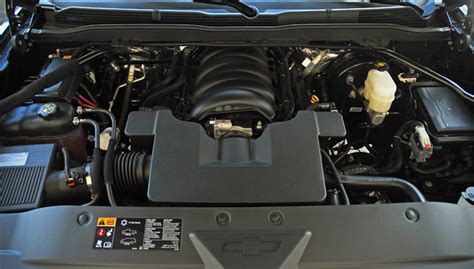The 1971 VW Bug is a classic German-made car that is still popular to this day. It has a distinctive look and is known for being reliable and efficient. But how much horsepower does a 1971 VW Bug have?
The 1971 VW Bug has a 1.6-liter, 4-cylinder engine. This engine is capable of generating approximately 50 horsepower. It is a relatively low output but it is still enough to get the car up to speed. The 1971 VW Bug was not designed to be a performance car, but it is still capable of reaching speeds of up to 85 miles per hour.
The 1971 VW Bug also has an impressive fuel economy. With a 4-speed manual transmission, it can get up to 28 miles per gallon on the highway. With a 3-speed automatic transmission, it can get up to 24 miles per gallon on the highway.
When it comes to maintenance, the 1971 VW Bug is fairly straightforward. The air filter should be changed every 10,000 miles, and the oil should be changed every 3,000 miles. The brakes should also be checked regularly and the tires should be rotated every 5,000 miles.
Overall, the 1971 VW Bug is a reliable and efficient vehicle with a peak output of 50 horsepower. It is not a performance car, but it is capable of reaching speeds of up to 85 miles per hour and has an impressive fuel economy. In terms of maintenance, it is relatively straightforward and can be kept running for many years to come.
How Many Horsepower Does A 1971 VW Bug Have?
If you’re looking for information on how much horsepower a 1971 VW Bug has, then you’ve come to the right place. We’ll discuss everything from engine types and power ratings to how to get the most out of your Bug. So let’s get started!
The 1971 VW Beetle was available with a variety of engine types, ranging in horsepower from 34bhp to 50bhp. The most powerful engine in the lineup was the Type 4 engine, which was a larger, more powerful version of the Type 1 engine. This engine delivered an impressive 50bhp, making it the most powerful engine available in the Beetle line-up. It was the only engine available in the Beetle line-up that was capable of reaching speeds of over 100mph.
Despite its age, the 1971 VW Beetle is still a popular choice among vintage car enthusiasts. The Type 4 engine is still in demand and is often used in vintage car racing. If you own a 1971 VW Beetle and are looking to get the most out of your car, then you’ll want to make sure the Type 4 engine is properly tuned. This will help ensure that your Bug is running at its peak performance and will make it more enjoyable to drive.
For those looking to buy a 1971 VW Beetle, you’ll be happy to know that these cars are still relatively affordable. Prices for these models range from around $3,000-$5,000, depending on the condition and mileage. It’s important to note that the Type 4 engine is considered to be the most reliable and long-lasting of the VW engines, and is likely to be the most desirable option when shopping for a 1971 VW Beetle.
In conclusion, the 1971 VW Beetles are a great option for vintage car enthusiasts looking to get the most out of their vehicles. With its powerful Type 4 engine capable of reaching speeds of over 100mph, these cars are sure to bring a smile to any car enthusiast’s face. Prices for these cars range from around $3,000-$5,000, so make sure to shop around for the best deal.
| Engine Type | Horsepower |
|---|---|
| Type 1 | 34bhp |
| Type 4 | 50bhp |
A Look At 1971 VW Bug Horsepower Performance
The 1971 VW Bug is a classic vehicle that many people are still interested in today. It was a reliable and stylish car that offered a good ride. When it comes to horsepower performance, the 1971 VW Bug was quite impressive. The base model of the 1971 VW Bug had a 1.6L engine that produced 48 horsepower. The higher end models had a 1.6L engine that produced 60 horsepower.
These cars were equipped with a four-speed manual transmission. This was important as the VW Bug was a rear-wheel drive vehicle. The 1.6-liter engine was able to reach its maximum power at 4500rpm. This was a good performance for a vehicle of its size.
The 1971 VW Bug was also equipped with a dual carburetor. This allowed the engine to produce better torque and acceleration. The dual carburetor also provided more fuel efficiency than the single carburetor models. The higher end models of the 1971 VW Bug also had a four-speed automatic transmission. This made the car more efficient and easier to drive.
If you are looking for a classic car that still offers good performance, the 1971 VW Bug should be on your list. It is a reliable and stylish car that offers a good ride. With its four-speed manual transmission and dual carburetor, it is able to reach its maximum power quickly.
The 1971 VW Bug is a great car for anyone who wants a classic vehicle with good performance. It is a reliable car that is still popular today.
The 1971 VW Bug had a 1.6L engine.
The 1971 VW Bug has about 53 horsepower.
The 1971 VW Bug has an air-cooled, four-cylinder, horizontally opposed engine.
Yes, the 1971 VW Bug is fuel-efficient.
The 1971 VW Bug has a four-speed manual transmission.
The 1971 VW Bug uses gasoline.
The 1971 VW Bug engine has a single carburetor.
The 1971 VW Bug has a top speed of roughly 85 mph.
The 1971 VW Bug has four-wheel drum brakes.
The 1971 VW Bug has an independent front suspension and swing axles at the rear.






